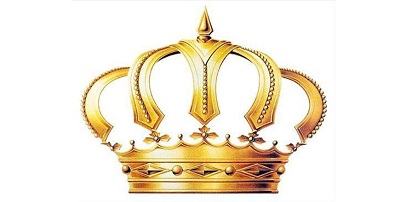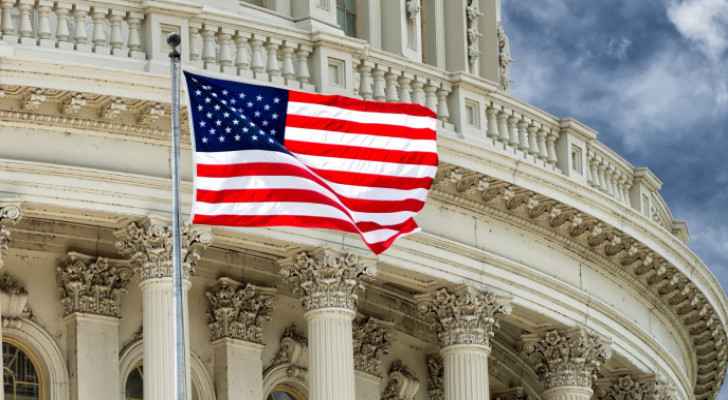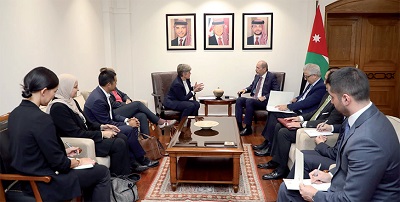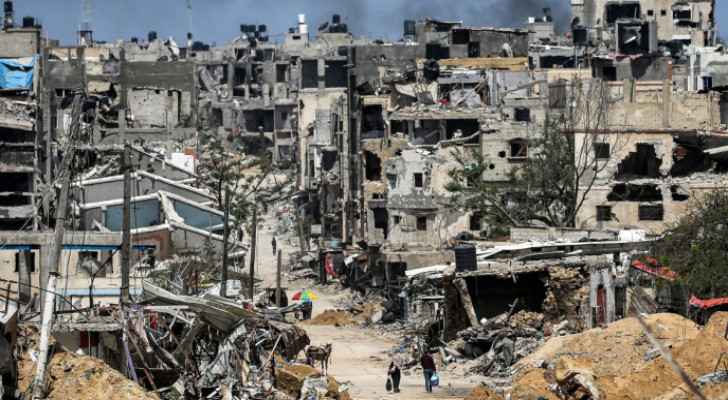From Gaza border to Ahed’s prison cell, Palestinian youth united by pain and resistance - By Ramzy Baroud, Al Arabiya
Starting Friday, March 30, tens of thousands of Palestinians amassed at Gaza’s eastern border gearing up for protests and vigils that are expected to last until May 15. On that date, 70 years ago, Israel declared its independence, resulting in the exile of hundreds of thousands of Palestinians.
There is more to this unique act of popular mobilization than the need to underscore the Right of Return for Palestinian refugees, as enshrined in international law, or to commemorate Land Day, an event that has united Palestinians of all factions and backgrounds since the mass, and bloody protests of 1976.
The popular initiative has served as a platform for Palestinian youth in Gaza, and other parts of the Palestinian homeland to reassert their relevance and anger, and to challenge bitter factionalism and political rivalry.
In a rare show of popular mobilization, thousands of Palestinians descended on the Gaza border, separated from Israel by a narrow but deadly “buffer zone”.
The intention of the organizers who represented all Palestinian factions was to restate the urgency of the dire humanitarian crisis in Gaza. But for thousands of protesters, the hope was to restate national Palestinian priorities that transcend factionalism and regional politicking.
The Israeli army’s response, however, was immediate and lethal. By killing 15 unarmed protesters and wounding 773 people with live ammunition in one single day, the Gaza protests, dubbed the Great March of Return, became an international event, bringing neglected Gaza back to the center stage.
Gazans pitched tents, conversed, sang together and waved Palestinian flags as opposed to the banners of the various factions. Even circus clowns joined in, amusing the numerous children who came along with their families. It was a rare moment of respite and unity.
Watching Palestine’s youth taking their first steps in reclaiming their fight reminded me of the potent quote by Frantz Fanon, the anti-colonial author and revolutionary who wrote in his seminal book, ‘The Wretched of the Earth’, “Each generation must discover its mission, fulfill it or betray it, in relative opacity.”
Youth under occupation
The current generation of Palestinians is embarking on the task of discovering and fulfilling their mission. This mission of Palestinian youth under siege in Gaza is the same as that of Palestinian youth under military occupation in the West Bank.
Indeed, the arrest and prolonged detention of Palestinian teen, Ahed Tamimi, starting December 19, highlight the nature of the challenge facing Palestine’s budding generation. They are faced with a brutal Israeli military regime and a self-serving Palestinian leadership.
On March 21, Ahed’s lawyer reached a plea bargain agreement, the terms of which state that she is expected to serve 8 months in Israeli military prison before being set free.
Ahed was detained, along with her mother, for slapping an Israeli soldier, an act that was filmed and went viral on social media. Nine other members of her family were detained in February, including Ahed’s 15-year-old cousin, Mohammed who was shot in the head by Israeli police, at close range. They all hail from the small village of Nabi Saleh.
The 500 residents of Nabi Saleh have tirelessly challenged illegal settlements and Israeli Apartheid Wall, built illegally on Palestinian land. These protests have been a staple in the everyday life of the village for nearly 12 years.
Anywhere between 600,000 and 750,000 illegal Jewish settlers live in settlements placed strategically throughout the Occupied West Bank and East Jerusalem – a glaring violation of international law. Aside from the massive Israeli army build-up in the Occupied Territories, these armed settlers have been a major source of violence against Palestinians.
Ahed and Mohammed Tamimi, along with thousands of Palestinian children and teenagers, were born into this violent reality and feel trapped, violated and frustrated.
Their collective imprisonment is not only as a result of the perpetual military occupation of their land by Israel, but also of the ineffective Palestinian leadership which has pursued its self-interests for many years, orbiting far away from Nabi Saleh and its small but resilient populace.
The village is a short distance northwest of Ramallah – the political base of the Palestinian Authority (PA) – but in some ways, both places are a world apart.
The PA was formed in 1994 as one of the outcomes of the Oslo Accords, which was initially reached and signed in secret by the Palestinian Liberation Organization (PLO) and Israel. Most Palestinians in the Occupied Territories matured politically or were even born after the advent of the PA. They have no other frame of reference but Israel and the Ramallah-based authority.
The latter has grown comfortable as a result of its wealth and status and, with time, evolved into a culture of its own.
United in grief
The Palestinian reality is now shaped by three forces: the domineering Israeli occupation, the subservient and self-centered PA, and the indignant and leaderless Palestinian youth. Ahed’s counterparts in Gaza have endured brutal wars and a suffocating siege. The youth of Palestine are not only united by their pain and grief, but also by their determination to attain their freedom.
This is why Ahed’s slapping of the Israeli soldier resonated throughout Palestine, and among Palestinians and non-Palestinians internationally. It was a symbol of defiance that, despite the twofold oppression, Palestine’s youth still have the power to articulate an identity, one that despite being captive, is nonetheless irrepressible.
Alas, the mission of this generation of young Palestinians is much more arduous than previous generations, especially Palestinian youth who led and sustained a seven-year-long uprising, the Intifada of 1987, also known as the Intifada of the Stones.
That generation resurrected the Palestinian cause as they daringly organized their communities, mobilizing all efforts to challenge the Israeli occupation. Thousands were killed and wounded at the time, but an empowered Palestinian nation arose in response.
The Palestinian leadership used the Intifada to reinvent itself. It exploited the attention young Palestinians had garnered to negotiate Oslo, which ultimately gave some Palestinians special status and denied others any rights or freedoms.
The PA, led by President Mahmoud Abbas, an ailing 83-year-old, understands well enough that if the youth are to be given the chance to mobilize, another Intifada would dismantle his entire leadership, likely in a matter of days.
Numerous Palestinians have been arrested, imprisoned and tortured by Palestinian police in the years that followed the formation of the PA, under the veneer of ‘national interest’. In reality, it was done in the name of Israeli security.
Indeed, Oslo has allowed both Israel and the PA to maintain “security coordination” in the West Bank. This has mostly aimed at keeping the illegal settlements safe and preventing Palestinian youth from confronting the Israeli army. Such a practice has meant that the PA became a first line of defense against rebelling Palestinians.
Palestinian youth already understand this, and it is mostly up to them to free themselves from the confines of military occupation and corruption.
Latest News
 King orders holding parliamentary elections in accordance with law, checks on electoral commission’s preparations
King orders holding parliamentary elections in accordance with law, checks on electoral commission’s preparations- N. Macedonia starts elections that could decide stalled EU talks
 US Senate passes bill for aid to Israeli Occupation, Ukraine, Taiwan
US Senate passes bill for aid to Israeli Occupation, Ukraine, Taiwan Safadi discusses support to Syrian refugee with DRC
Safadi discusses support to Syrian refugee with DRC Israeli Occupation aggression on Gaza enters 200th day
Israeli Occupation aggression on Gaza enters 200th day
Most Read Articles
- Safadi discusses support to Syrian refugee with DRC
- King, Kuwait emir reaffirm pride in deep-rooted relations
- Israeli Occupation aggression on Gaza enters 200th day
- Kuwait channels $24 billion in development assistance to Jordan in 24 years
- UNRWA’s role in Gaza indispensable — Foreign Ministry
- Jordan condemns Israeli 'war crimes' in Gaza, calls for accountability
- King orders holding parliamentary elections in accordance with law, checks on electoral commission’s preparations
- Baby delivered from dying mother's womb in Gaza 'miracle'
- Jordan outperforms MENA average in women, business, law indicators — report
- General Motors lifts 2024 profit forecast after strong Q1